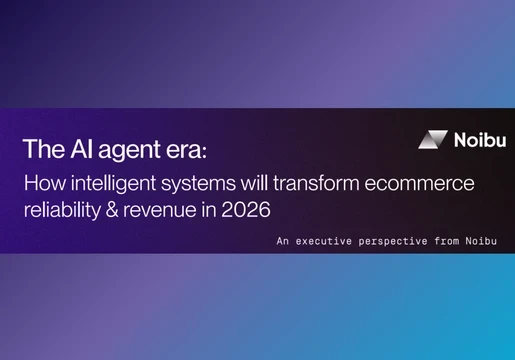Cloud strategy used to be a straight line. Pick a provider, standardise, migrate, optimise. Now it’s more like a map with detours, dependencies, and a few roads you did not build yourself.
That’s why multi-cloud architecture keeps coming up in boardrooms and architecture reviews. Not because teams love complexity, but because enterprises have strong reasons to use more than one cloud, and they need a design that doesn’t fall apart under that reality.
Multi-cloud architecture is the way an organisation designs, connects, governs, and secures systems that run across multiple cloud environments, usually from more than one public cloud provider. It’s not “we have accounts with AWS and Azure”. It’s an intentional operating model that decides what runs where, how traffic moves, how identity works, how data is protected, and how teams stay in control when everything is distributed.
If you’re trying to make multi-cloud “worth it”, the difference is simple. Strategy is the decision. Architecture is how you stop that decision becoming chaos.

What Multi-Cloud Architecture Means in Practice
Multi-cloud is widely defined as using services from multiple cloud providers, rather than relying on a single vendor for everything. AWS describes multicloud as a strategy that combines services from different third-party cloud providers, sometimes even mixing specific services across providers for best fit. Amazon Web Services, Inc. Microsoft frames it similarly, emphasising performance, flexibility, and resilience, but also calls out the need for planning and governance. azure.microsoft.com
Architecture is where that becomes real. A well-designed multi-cloud setup answers questions like:
- Which workloads must be portable, and which are allowed to be cloud-native and “sticky”?
- How do users authenticate once and access what they need everywhere?
- Where does policy live, and how do you enforce it consistently?
- What’s your network model, and how do you reduce cross-cloud latency surprises?
- How do you monitor, investigate, and respond when something breaks across multiple platforms?
You can’t “console your way” through those decisions. You need design principles, boundaries, and repeatable patterns.
Multi-Cloud vs Hybrid Cloud
This is where a lot of teams talk past each other.
Hybrid cloud is about mixing different types of environments, usually on-premises or private cloud plus public cloud. Multi-cloud is about using multiple cloud providers, often multiple public clouds at the same time. Cloudflare puts it bluntly: hybrid blends different types of clouds, while multi-cloud blends different clouds of the same type. Microsoft’s Cloud Adoption Framework echoes the practical distinction: hybrid is a mix of on-prem/private and public services, while multicloud is using multiple cloud providers concurrently, with a real challenge being unified operations and security.
In the real world, many enterprises are both. You might have on-prem workloads you can’t move yet (hybrid), plus production systems spread across AWS and Azure (multi-cloud). That’s not a failure of strategy. It’s just the shape of modern estates.
Why Enterprises Choose Multi-Cloud
Multi-cloud isn’t a flex. It’s usually a response to pressure.
Microsoft highlights common drivers like reducing vendor lock-in, improving resilience, and optimising costs. AWS also frames multicloud as using the best tools and services from each vendor where they fit.
Those are valid reasons. The trap is assuming the benefits arrive automatically.
Multi-cloud only pays off when the business benefits are bigger than the operating cost you’re introducing. And that operating cost is real: more platforms, more identity models, more tooling, more policies, more skills, more ways to misconfigure something at 2am.
The Core Building Blocks of Multi-Cloud Architecture
If you the marketing away, multi-cloud architecture comes down to five building blocks. Get these right and you can scale multi-cloud safely. Get them wrong and you’ll end up with fragmented teams and invisible risk.
1) A workload placement model that matches reality
Start by classifying workloads based on what they need, not what’s fashionable.
A placement model typically separates workloads into buckets like:
- Workloads that must run in a specific cloud for regulatory, latency, or product integration reasons
- Workloads that need portability because you want leverage, resilience, or future migration options
- Workloads that should remain close to a specific dataset or on-prem system
- Experimental workloads where speed matters more than standardisation
This is where you decide what “portable” really means for your organisation. Workload portability is a goal, not a default setting, and it usually requires standardised runtime patterns, deployment pipelines, and a willingness to avoid some vendor-specific services. That trade-off is the point.
2) Identity as the control plane
If your identity model is inconsistent, everything else becomes a patchwork.
In multi-cloud, your goal is one authoritative identity source and consistent policy enforcement across environments. That means centralising authentication, aligning access models, and being ruthless about privilege creep.
This is where identity and access management becomes multi-cloud’s make-or-break capability. Even NIST’s decision to form a dedicated Multi-Cloud Security Public Working Group is an implicit admission that security challenges multiply when you add more providers and service boundaries.
You don’t need “perfect”. You need consistent, enforceable, auditable.
3) Networking that assumes cross-cloud friction
Cross-cloud networking is where good-looking architecture diagrams go to die.
Latency, routing complexity, and inconsistent security controls can turn “resilience” into “random outage surface”. Multi-cloud architecture needs a clear connectivity model that covers:
- How services discover and talk to each other across clouds
- How traffic is segmented and inspected
- How you manage egress (including cost and data exposure)
- How you avoid building a spaghetti mesh of ad hoc tunnels and exceptions
The simplest rule that holds up in practice is this: keep data flows intentional. If a workload doesn’t have to talk across clouds, don’t design it to.
4) Observability that works across providers
Multi-cloud doesn’t fail politely. It fails in ways that are hard to trace.
Different logging formats, different metrics systems, different ways of representing identity and network events. Unless you normalise telemetry and unify monitoring, you’ll see symptoms but struggle to identify cause.
This is why observability isn’t “nice to have” in multi-cloud. It’s how you keep shared accountability when teams span platforms.
5) Automation and policy by default
If you rely on manual configuration, multi-cloud will punish you.
You need repeatability. You need version control. You need templates, guardrails, and policy enforcement that moves as fast as your teams do.
That’s where infrastructure as code comes in. HashiCorp describes Terraform as a tool that lets you build, change, and version infrastructure safely and efficiently, across low-level and high-level components. If you’re serious about multi-cloud, this style of approach is the difference between “architected” and “assembled”.
The Multi-Cloud Use Cases That Actually Hold Up
Multi-cloud use cases tend to fall into a few patterns. Some are strategic. Some are pragmatic. Some are accidental but still need to be managed like grown-ups.
1) Resilience and business continuity that isn’t tied to one vendor
This is the headline use case, and it’s often misunderstood.
Multi-cloud can support resilience, but only if you design for it. Simply running workloads in multiple clouds does not automatically create redundancy. You need clear failover models, data replication strategies, and realistic recovery testing.
When it’s worth it: critical services where downtime has material business impact, and where the cost of duplication is justified.
When it’s a trap: teams trying to “do active-active across clouds” without the operational maturity to run it, test it, and pay for the network and data movement overhead.
2) Regulatory and sovereignty requirements
Multi-cloud is often driven by where data is allowed to live, where it is processed, and which providers can meet audit expectations in specific regions.
This is especially common in finance, healthcare, and public sector environments, where data residency isn’t a preference. It’s a requirement that shapes architecture.
The key is to avoid building compliance as a one-off exception. Treat it as a design constraint, then standardise around it.
3) Best-of-breed platform choices for specific workloads
Some providers are stronger in particular areas. Teams may choose one cloud for a data and analytics platform, another for enterprise productivity and identity integration, and another for global content delivery or edge services.
AWS explicitly describes multicloud scenarios where applications use a database service from one cloud and other services, like load balancing or content delivery, from another.
This use case works when:
- You’re clear on which capabilities you want from each provider
- You minimise unnecessary cross-cloud dependencies
- You have governance that prevents one team’s “best of breed” decision becoming everyone else’s long-term burden
4) Mergers, acquisitions, and inherited cloud estates
This is the least glamorous and most common use case.
After an acquisition, you might inherit another cloud provider, different security tooling, and a completely different operating model. “Standardise later” is not a strategy, but it is often reality. Multi-cloud architecture gives you a way to stabilise operations while you rationalise over time.
This is where unified identity, centralised policy, and shared observability buy you breathing room.
5) Vendor risk management and negotiation leverage
Sometimes multi-cloud is about power dynamics.
If your organisation is deeply dependent on one provider, your risk posture includes that provider’s outages, pricing shifts, service changes, and contract negotiations. Multi-cloud can reduce vendor lock-in by giving you credible options, not just theoretical ones.
The credibility part is where most strategies fail. If you can’t move anything, you don’t have leverage. You just have complexity.
The Risks You Need to Treat as Non-Negotiables
Multi-cloud risk is rarely about one giant mistake. It’s about drift, inconsistency, and gaps between teams.
These are the risks that should never be allowed to blur together:
- Inconsistent identity and access controls across clouds, leading to privilege sprawl and weak auditability
- Visibility gaps across environments, making incidents slower to detect and harder to contain
- Configuration drift and misconfiguration due to manual setup and fragmented tooling
- Data movement risk, including exposure during transit and unexpected compliance impacts
- Cost sprawl from duplicated services, cross-cloud egress, and uncontrolled provisioning
NIST’s MCSPWG exists specifically to identify and mitigate the challenges of implementing secure multi-cloud systems, which is a strong signal that the security model needs deliberate attention, not optimism.
A Practical Framework for Designing Multi-Cloud Without Regretting It
If you want a multi-cloud architecture that supports the business instead of fighting it, use three decisions to anchor everything.
Decide what must be consistent across clouds
Some things should be identical everywhere because inconsistency creates risk and operational drag. In most enterprises, those include identity, baseline security controls, logging standards, and provisioning patterns.
Consistency does not mean sameness. It means the same intent, enforced in ways that can be audited and improved.
Decide what is allowed to vary
Other things can vary because they are workload-specific: database choices, managed services, runtime optimisations, and region-specific deployments.
This is where you give teams room to choose, without letting the estate fragment.
Decide who owns the trade-offs
Multi-cloud decisions always have trade-offs: speed vs standardisation, cost vs resilience, portability vs platform advantage.
If nobody owns those trade-offs, they’ll be made by accident, and you’ll only notice when something breaks. A multi-cloud operating model needs clear accountability that spans architecture, security, and finance.
That’s also where FinOps becomes relevant. The FinOps Foundation defines it as an operational framework and cultural practice that maximises business value from cloud, enabling timely data-driven decisions and financial accountability through collaboration between engineering, finance, and business teams. Multi-cloud without that collaboration becomes a budget horror story.
FAQs About Multi-Cloud Architecture
What is the definition of multi-cloud?
Multi-cloud is the practice of using services from more than one cloud provider. AWS defines it as a strategy that combines services from different third-party cloud providers so organisations can use each vendor’s tools and services where they fit best.
Is multi-cloud the same as hybrid cloud?
No. Hybrid cloud usually means combining on-premises or private cloud with public cloud, while multi-cloud means using multiple cloud providers concurrently.
Does multi-cloud always reduce risk?
It can reduce provider dependency risk, but it can also increase operational and security risk if governance, identity, and observability are inconsistent. NIST’s work on multi-cloud security highlights that secure multi-cloud deployment introduces distinct challenges that need active mitigation.
What’s the biggest mistake organisations make with multi-cloud?
Treating it like a procurement choice instead of an operating model. If you don’t design identity, policy enforcement, monitoring, and automation across clouds, you’ll end up with multiple silos, not a strategy.
When should you avoid multi-cloud?
When your main driver is FOMO, or when you don’t have the people and processes to run it. If your teams are still stabilising a first cloud migration, adding a second provider often multiplies problems instead of solving them.
Final Thoughts: Multi-Cloud Works When Architecture Does the Hard Part
Multi-cloud architecture isn’t about collecting cloud logos. It’s about designing a system where multiple providers can coexist without turning into a fragmented, ungoverned estate.
Done well, it gives you flexibility, resilience options, and the ability to place workloads where they make the most sense. Done badly, it creates a wider attack surface, slower incident response, and cost drift that nobody owns.
The real thesis is simple: multi-cloud is a valid strategy, but it only becomes an advantage when you treat it like an operating model, not a shopping list. If you want a second set of eyes on your cloud operating model, EM360Tech’s analyst-led conversations and practical explainers can help you pressure-test the decisions that matter before the complexity becomes permanent.







Comments ( 0 )